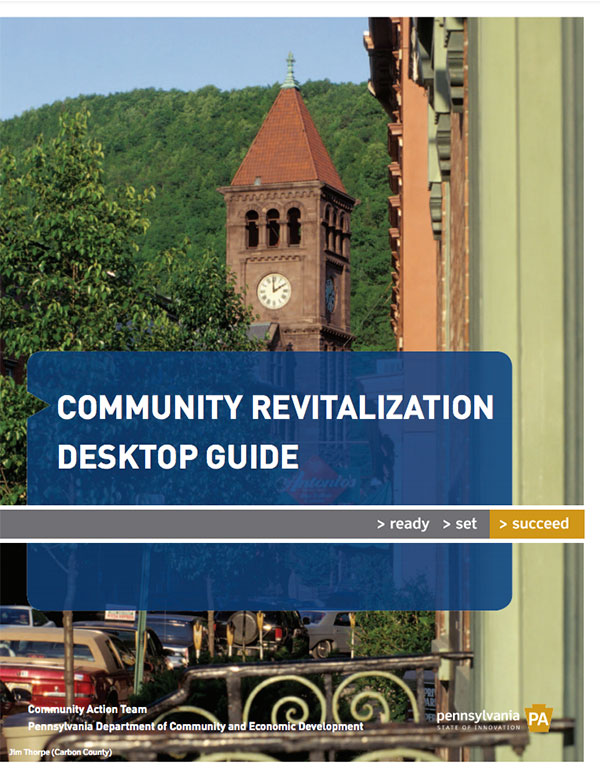Community Revitalization Desktop Guide was created for the State of Pennsylvania in order to provide local government officials with a comprehensive model for community revitalization. The Guide is based upon an analysis of what has worked over thirty years of city and town revitalization efforts. This Desktop Guide shares a detailed three-step process for attracting high-impact private investment within a redevelopment area to spur new economic growth:
- Choose one asset-rich redevelopment area
- Prepare redevelopment area for market by obtaining site control, public gap funding and a detailed action plan
- Welcome investment by marketing the community, presenting a responsive government, and updating zoning and the development review process.
The Guide recognizes that no two places have identical challenges or solutions, and the community capacity to implement them differs as well. But looking back at the attempts to attract reinvestment over past thirty years, there are certain lessons learned that can be helpful to all older communities. For instance, experience has taught us that public money alone can not turn around a community. Private investment is essential to create new jobs, housing and opportunities in older communities. We also know that a single development does not turn around a town or city that has lost major employers and seen little investment for decades. Revitalization is multi-layered and complex. Multiple coordinated high-impact projects must be put in place to reinvigorate local economies and create new reasons to live, work and visit our older communities. The goal of this Pennsylvania state guide is to help Pennsylvania�s cities and towns to do that. The guide includes four detailed case studies of cities and towns that have attracted their first high impact private investment in decades. These cases studies include:
- Wilkes-Barre
Putting together multiple high-impact projects on city owned parcels - Pottstown
Transforming an eyesore at a key intersection to attract private investment - Greensburg
Bringing a university and the arts downtown - Washington
Attracting a native born developer to invest in downtown
The guide also includes interviews with private developers who share how they choose an urban site for investment and interviews with Pennsylvania Mayors who have taken action to prepare their city to welcome new investment.
